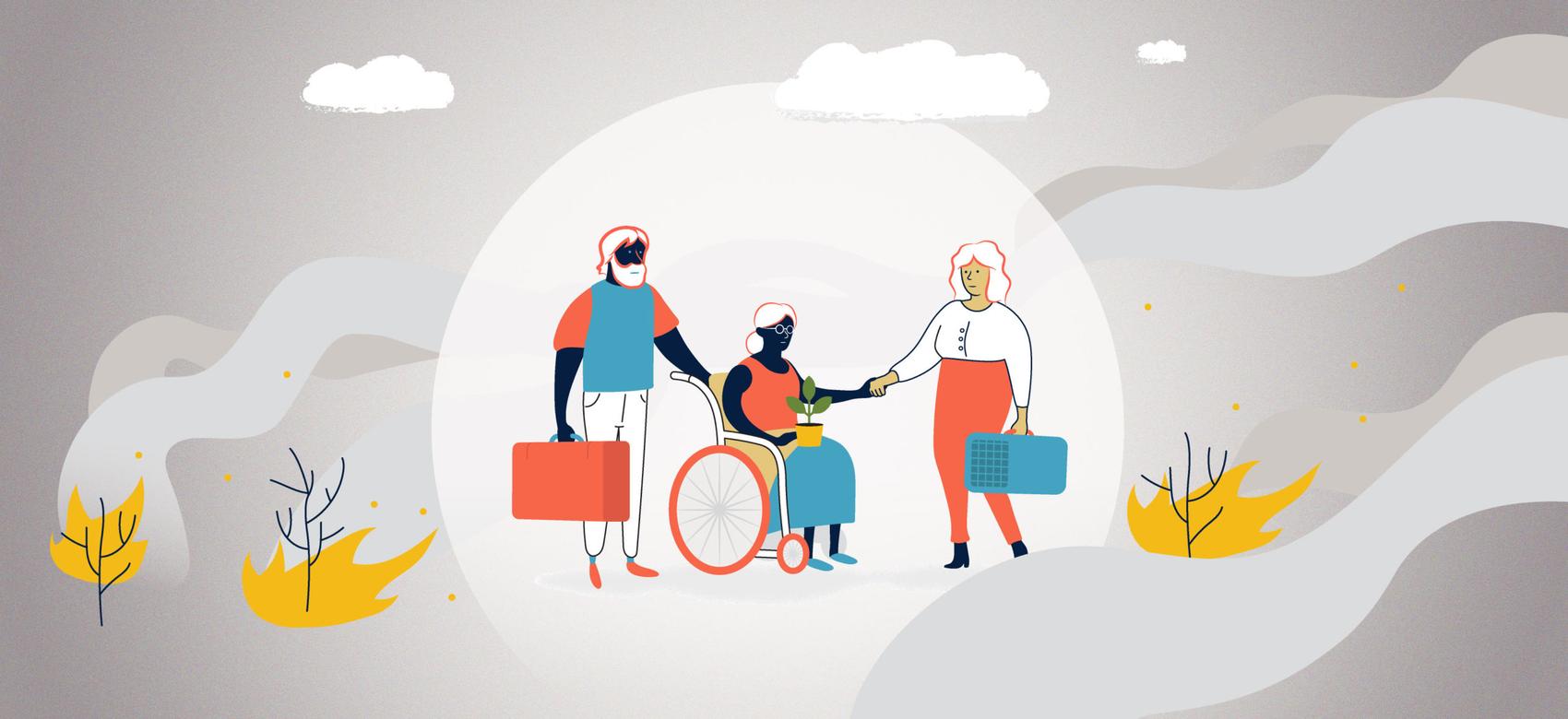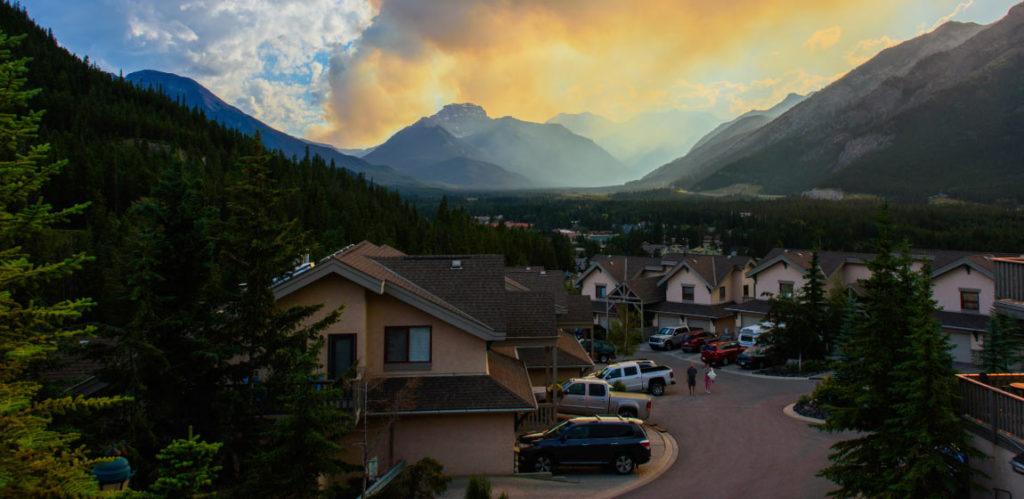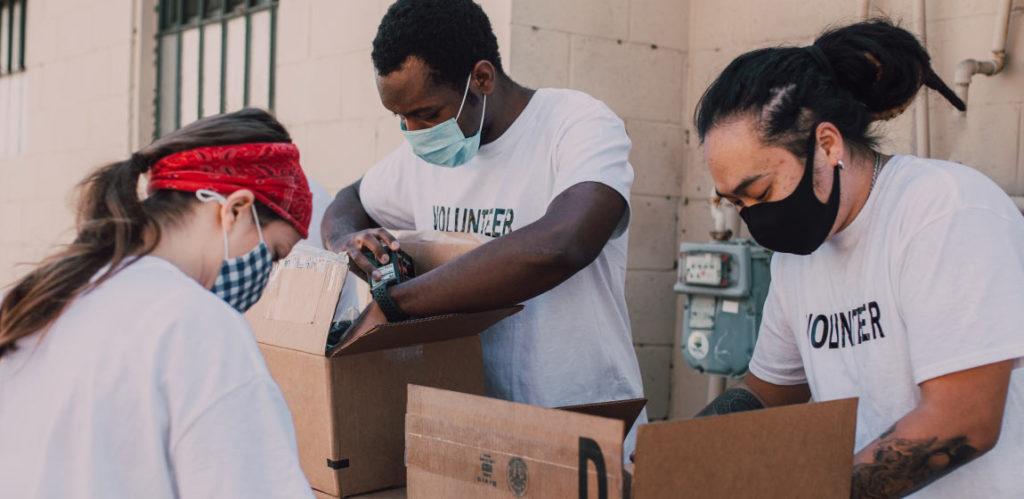Building community resilience to wildfires in BC
By Silvia Moreno-Garcia

As climate change makes wildfires more frequent and destructive, we need to address the inequities that communities face in dealing with them
With intense wildfires becoming the new normal in BC, it might seem logical for people to start moving away from areas where these disasters are happening. But UBC Sustainability Scholar Sarah Kamal, who researches climate migration policy in Canada, says moving isn’t a viable option for many people. That’s why we need to focus on helping communities build resilience to wildfires in BC, rather than reactive strategies to handle their displacement.
Kamal says that we can learn from research on climate migration in other countries, such as Bangladesh. Research has shown middle class families in Bangladesh are more likely to migrate due to unfavourable conditions brought on by climate change, but the very wealthy and the poor will remain in an area. The wealthy have the funds to adapt to climate change—proofing their homes against floods, for example—while the poor don’t have resources to migrate. To survive, some household members move to other areas and send remittances to their relatives back home.
Families with greater resources may be able to purchase homes in safer areas, creating a wave of “climate gentrification” that erodes disadvantaged communities.
“But the truth is nobody wants to move,” Kamal says. “In some cases, moving can be worse than staying, the risks are just too high. Ultimately, what gives a community more resilience is the option of moving rather than being forced to move.” To better serve those that do not move, she says, we need to become more proactive when it comes to managing wildfires and making sure that all members of society are protected.

Building resilience to fire
Former firefighter and UBC Environmental Science assistant professor Mathieu Bourbonnais says that for over 100 years we’ve been focused on putting out fires while proactive management of fires has taken a back seat. He points out that Indigenous communities, such as the Tsilhqot’in Nation, have traditionally used fire for cultural and land management purposes. But European colonizers discouraged such practices.
UBC researchers Dr. Kira Hoffman and Dr. Amy Cardinal Christianson reviewed fire management practices and recent wildfires in Canada and recommend the revival of cultural burning, while moving toward Indigenous-led fire stewardship to better manage wildfire risks and promote healthy ecosystems.
Dr. Hoffman is an ecologist, former wildland firefighter and a postdoctoral research associate with the UBC Faculty of Forestry, while Dr. Christianson is an Indigenous fire research scientist with the Canadian Forest Service. Dr. Hoffman explains that cultural burning is different from prescribed burning, but both are planned and controlled application of fire to a specific area of land.
Dr. Bourbonnais says that periodic planned burning can remove sources of fuel on the ground, such as dead grass, leaves and trees, lowering the intensity of wildfires and allowing new vegetation to grow. There can be resistance to implementing change and allowing people to put fire back into the landscape, but both he and Kamal think prescribed burning techniques work.
“Kanaka Bar Indian Band, just south of Lytton, BC, had done some preventive burning and they were not affected by the wildfire like Lytton was,” Kamal says.
Dr. Bourbonnais believes we must reconsider some of the ways we harvest and plant trees. Forest thinning, where certain trees are removed from an area, can help mitigate the risk of severe fires by creating a “break” in the landscape. “For example, replanting and using aspen and other deciduous trees in some areas is one way to reduce fire risk because they don’t really burn that well,” Dr. Bourbonnais says.
“Disasters do discriminate. Indigenous communities are forced to evacuate much more often than other communities. Smaller, remote communities are often at greater risk and more battered by a crisis.”
– Sarah Kamal, UBC Sustainability scholar

Social inequalities laid bare
As intense wildfires affect an area, it is also crucial to examine how inequities exacerbate their damage, and the toll they take on our society.
“Disasters do discriminate,” says Kamal. “Indigenous communities are forced to evacuate much more often than other communities. Smaller, remote communities are often at greater risk and more battered by a crisis.”
For example, the percentage of people at risk from wildfires in on-reserve First Nations communities is nearly three times higher than other populations.
What we need, both Kamal and Dr. Bourbonnais say, are provincial and national policies that tackle wildfires and climate migration while considering the needs of local communities. Building resilience means addressing vulnerabilities and looking at the more disadvantaged populations, such as the elderly, people with disabilities and Indigenous groups, to make sure they are supported in times of crisis.
“Disadvantaged populations are already overwhelmed with so many issues that they may not have the capacity to do preparation work when it comes to wildfires,” Kamal explains.
Consider the basics you need to have in case of an evacuation: supplies, a vehicle, money for a hotel, and so on. Now imagine if you lack one of these elements: for example, a caregiver to assist you into a vehicle. Or imagine how difficult a stay in a shelter might be for someone with mobility challenges.

Creating climate resilient communities
In a 2021 paper on climate displacement authored by Kamal, she notes that there are four ingredients required to create climate resilient communities: local, community-driven approaches; partnerships between organizations such as governments, non-profits and the private sector; investments in social cohesion and economic wellbeing; and federal coordination.
Considering social and cultural connections is also important, she says. A 2019 study that looked at how members of the Mishkeegogamang Ojibway Nation in Ontario responded to a wildfire evacuation showed gaps in the process. The study concluded that future evacuations should consider ways to allow families to remain in their traditional territory, or relocate them to Indigenous communities where they have strong familial and cultural ties.
Kamal says developing memorandums of understanding could allow communities to better prepare in case of an evacuation. Agreements could also make it easier for neighboring towns to support families displaced by wildfires. And while MOUs to improve emergency management services between governments and First Nations have been put into place, it’s crucial to ensure we are applying what we’ve learned from previous disasters.
While there is no easy fix, the key is to be proactive in finding solutions to improve community welfare, says Kamal. “Ultimately, that will increase resilience to wildfires.”
Learn tips for coping with wildfire smoke
Silvia Moreno-Garcia is a bestselling author and a freelance writer. With files from Lou Corpuz-Bosshart, UBC Media Relations. This article was published on May 10, 2021. Feel free to republish the text of this article, but please follow our guidelines for attribution and seek any necessary permissions before doing so. Please note that images are not included in this blanket licence.


